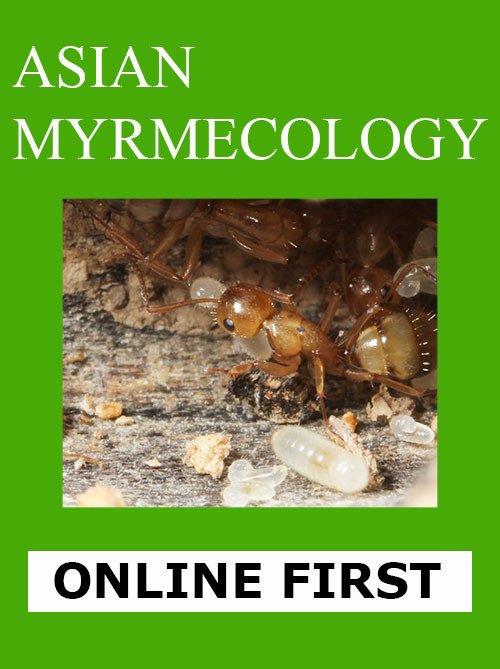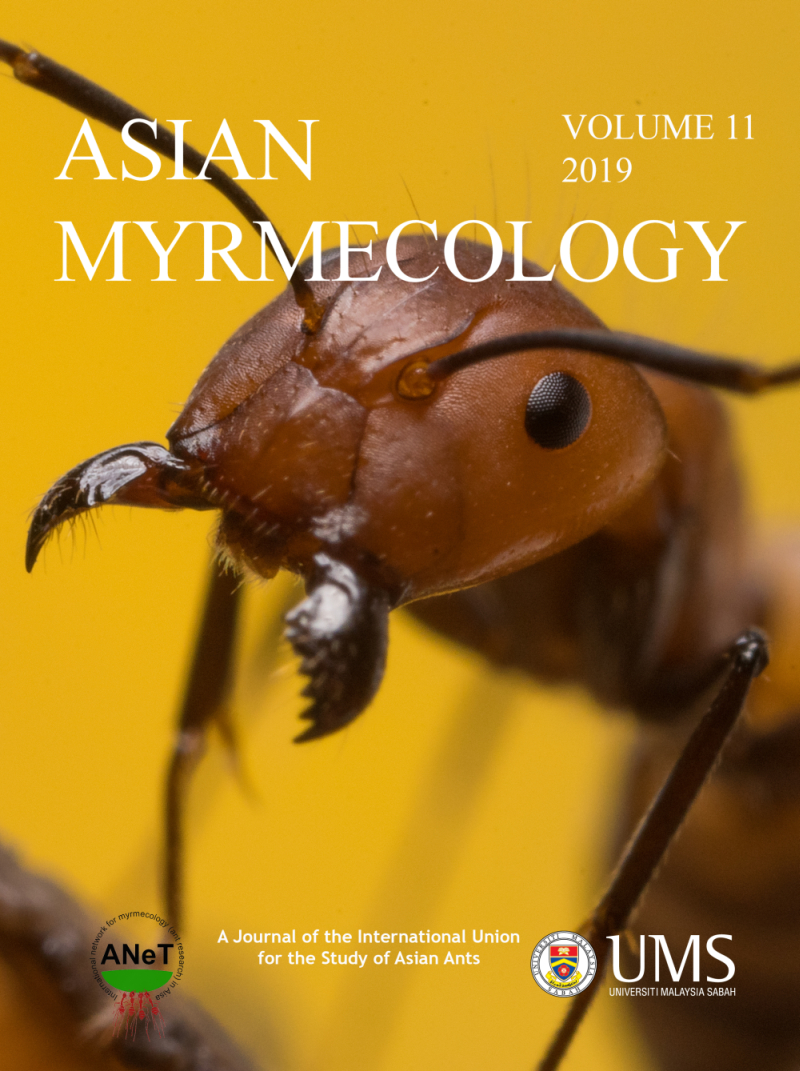ASIAN
MYRMECOLOGY
Image: François Brassard
online first (online version of paper published before print issue)
DOI: 10.20362/am.013002
Asian Myrmecology 12: e013002 (1-10)
article first published online: 16/May/2021
The twists and turns of biological research: first record of an ergatoid queen in the ant genus Pheidole Westwood, 1839, and implications for dispersal and life history
DAVID EMMANUEL M. GENERAL1*, PERRY ARCHIVAL C. BUENAVENTE2 and CHRISTIAN PEETERS3
Abstract:
An ergatoid queen is reported for the first time in the ant genus Pheidole Westwood, 1839. Initially being investigated as a mermithergate, its true reproductive nature was finally proven after several years of searching for fresh specimens for dissection and imaging. Two possibilities remain unresolved regarding the reproductive strategy seen in the Philippine local populations of P. aglae: (1) that they are secondary reproductives; or (2) winged queens have been eliminated from the Philippine population due to isolation on oceanic islands. The exceptional reproductive strategy was found in the oceanic islands of Luzon and nearby Polillo. Further research is needed by taking account of the “island syndrome”. This study also highlights the unexpected directions that problems in biological research take the researcher.
Keywords:
dispersal, dependent colony foundation, ovary, Philippines, Pheidole aglae, Formicidae
This article is part of the Asian Myrmecology Special Issue in memorial of Christian Peeters.
Get PDF (5.26 MB):
1University Researcher, Museum of Natural History, University of the Philippines Los Baños, Los Baños, Laguna, Philippines; and Research Associate, Philippine National Museum, Malate, Manila, Philippines.
2Museum Researcher, Zoology Division, Philippine National Museum, Malate, Manila, Philippines.
3Sorbonne Université, CNRS, Institut d’Écologie et des Sciences de l’Environnement, Paris 75005, France.
*Corresponding author: dmgeneral@up.edu.ph.



